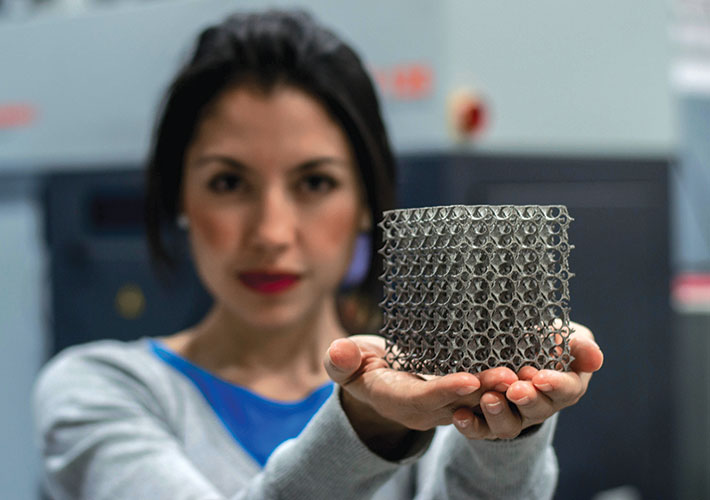
The Give-and-Take
In 2009, the formation of ASTM Committee F42 on Additive Manufacturing helped catalyze international interest, investment and innovation in the additive manufacturing industry (or, as it's popularly known, 3D printing). Government agencies throughout the world increased research funding in AM to help industry and academia bring to fruition the potential inherent in AM technologies.
Out of the early activities of Committee F42, the need for scientific simulation tools capable of predicting AM phenomena was identified as a key enabler for future innovation in AM. It was this broadly recognized need that led to the development of 3DSIM's software capabilities.
AM technologies have the potential to disrupt nearly every manufacturing sector where high quality part production is required. AM practitioners, however, spend tens (if not hundreds) of millions of dollars every year generating the experimental data needed for process improvement and part qualification. 3DSIM's software was developed specifically to reduce this need for trial-and-error-based innovation.
3DSIM has developed software tools for two target audiences. The first is the machine user, for which 3DSIM has developed its exaSIM software products. The second audience is made up of engineers, scientists, designers and material experts who seek to understand what happens if you change your machine, geometry and/or material combination. 3DSIM's FLEX product meets the needs of this audience.
Through involvement with ASTM Committee F42, we are able to regularly interact with each of these audiences as part of the development of consensus standards. These "neutral" interactions (where no buying, selling or marketing is going on) helps us better understand our customers' challenges and design better products to meet their needs.
3DSIM's current product line is focused on metal, laser powder-bed fusion processes. In the future, 3DSIM intends to offer products for metal, electron beam powder bed fusion processes, polymer powder bed fusion processes and directed energy deposition processes. The fact that these machine category names were refined and adopted by Committee F42 has helped 3DSIM quickly and easily communicate to its customers the scope of our current and future products.
3DSIM's exaSIM support structure optimization tool uses residual stress and strain calculations to identify the optimum amount of support needed to reduce distortion and prevent build crashes. Providing supports only where they are needed minimizes material waste and post processing time. Future exaSIM modules are planned to help customers to predict part distortion and to compensate the geometry so that the part distorts to the correct shape.
3DSIM hopes this type of simulation-driven build setup functionality will become part of the regular workflow for building parts using AM. It is likely that software tool capabilities such as these will become part of future consensus standards related to best practices and procedures.
The qualification of AM parts is a huge burden in industry today, and many of Committee F42's standards are focused on making qualification easier. F42's existing standards rely on massive amounts of historical experimental data and user experience, which were time-consuming and costly to develop.
3DSIM is creating products and services that will accelerate innovation and revolutionize AM. We believe that our growth and success has benefitted greatly from our involvement in ASTM, and we hope that Committee F42 will be able to develop standards based upon the insight our software tools provide.
Company Snapshot
- 3DSIM, Park City, Utah
- Developer of innovative modeling and simulation tools for additive manufacturing technologies
- 3DSIM
- Market: Global
- Number of staff: 20
- Number of staff serving on ASTM committees: 2
 SN Home
SN Home Archive
Archive Advertisers
Advertisers Masthead
Masthead RateCard
RateCard Subscribe
Subscribe Email Editor
Email Editor